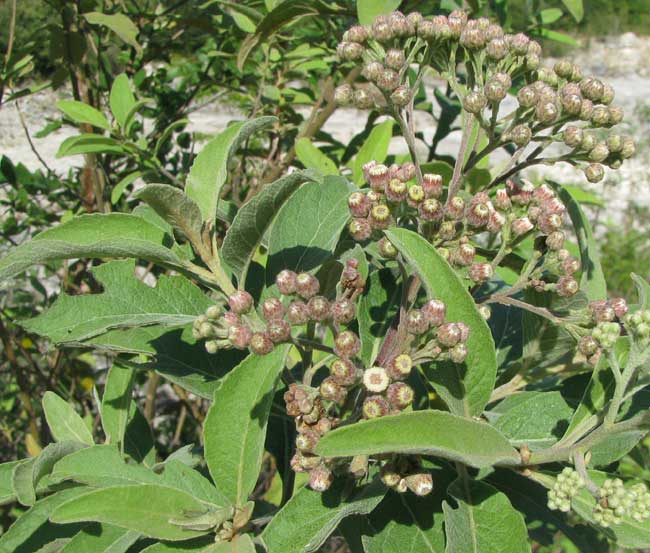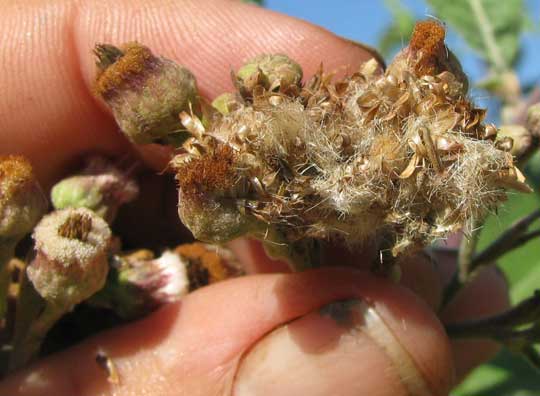Excerpts from Jim Conrad's
Naturalist Newsletter

from the October 24, 2010 Newsletter issued from Hacienda Chichen Resort beside Chichén Itzá Ruins, central Yucatán, MÉXICO; limestone bedrock, elevation ~39m (~128ft), ~N20.676°, ~W88.569°
PLUCHEA
It's a pretty good time to be enjoying weeds. After the long, hot rainy season they're lush and healthy, and as we rapidly enter the dry season when most herbaceous and shrubby plants die back or lose their leaves, now they're often full of flowers and fruits. For example, along weedy roadsides around here sometimes you see an eight-ft-tall (2.5 m), much-branched shrub, a small portion of which is seen above.
It's clear that this is a member of the Composite Family as soon as we see the pea-sized flower heads. In each head many tiny flowers are packed side by side within a goblet-shaped structure composed of numerous overlapping scales, the involucre, just as with all composite flowers. You can see some heads and a messy, fuzzy mass produced where mature heads split open and release hundreds of tiny "seeds" topped by wind-catching "parachutes" consisting of tiny, white hairs below:

This is PLUCHEA CAROLINENSIS. If you walk up to a leaf and crush it between your fingers it'll issue a strong, oily, medicinal smell. Most people say it stinks but in fresh air and dazzling sunlight I rather like its no-nonsense pungency, if only because it has character.
The species is native to tropical America and is used medicinally in the Caribbean, where one name for it is Cure For All. Its main use is for sore throats and sinus problems.